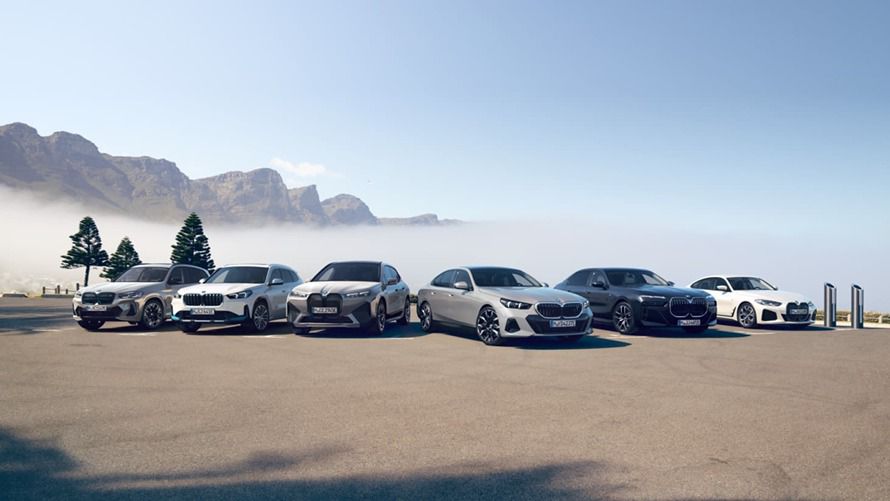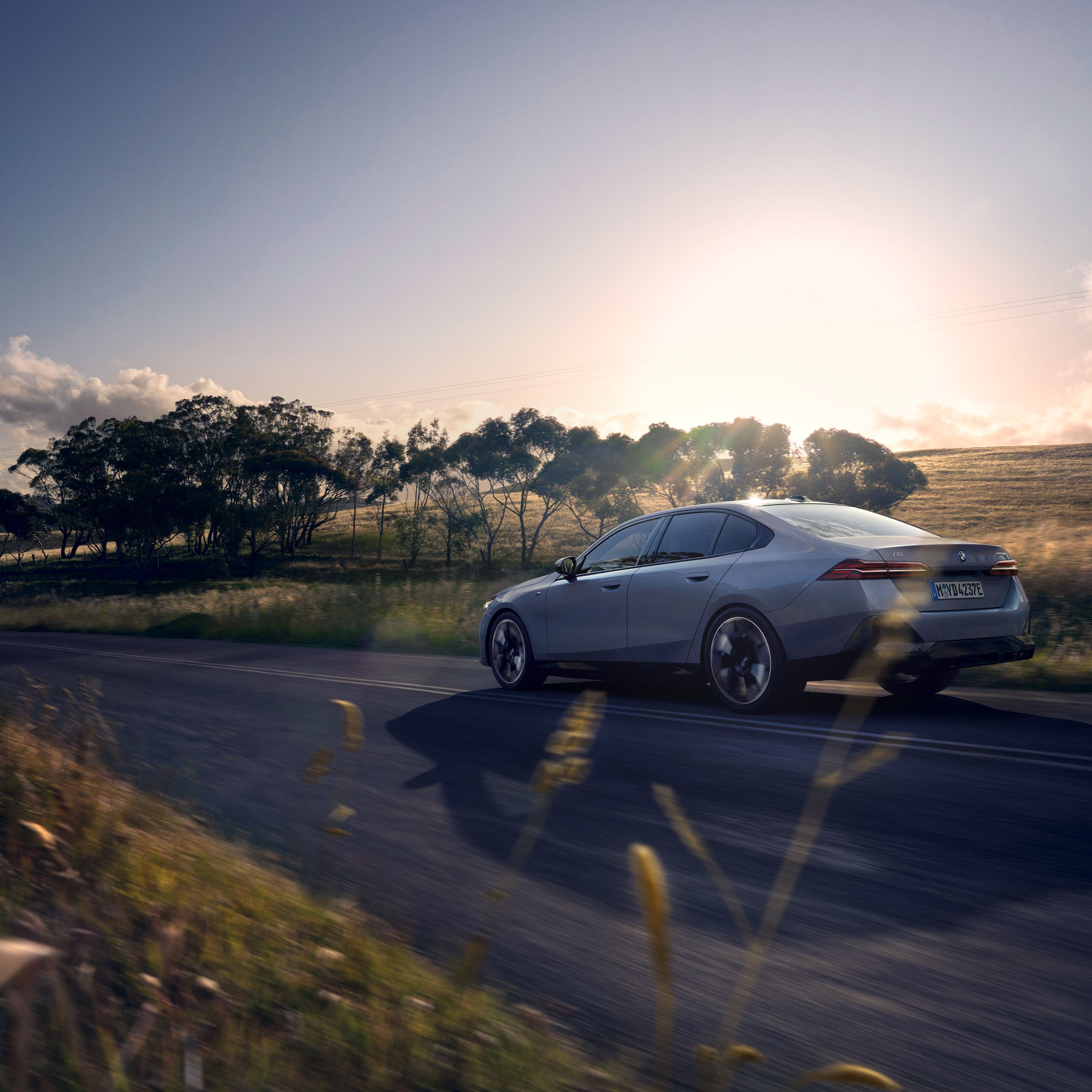THE CURRENT BMW 5 SERIES.
The BMW 5 Series is the epitome of dynamic and sporty driving characteristics. As a business sedan, SUV or Touring. Elegant from the outside. Luxurious on the inside. Equipped with state-of-the-art technology for more safety and comfort. With precisely tuned suspensions and powerful motors.
FURTHER TOPICS.

BMW ELECTROMOBILITY.
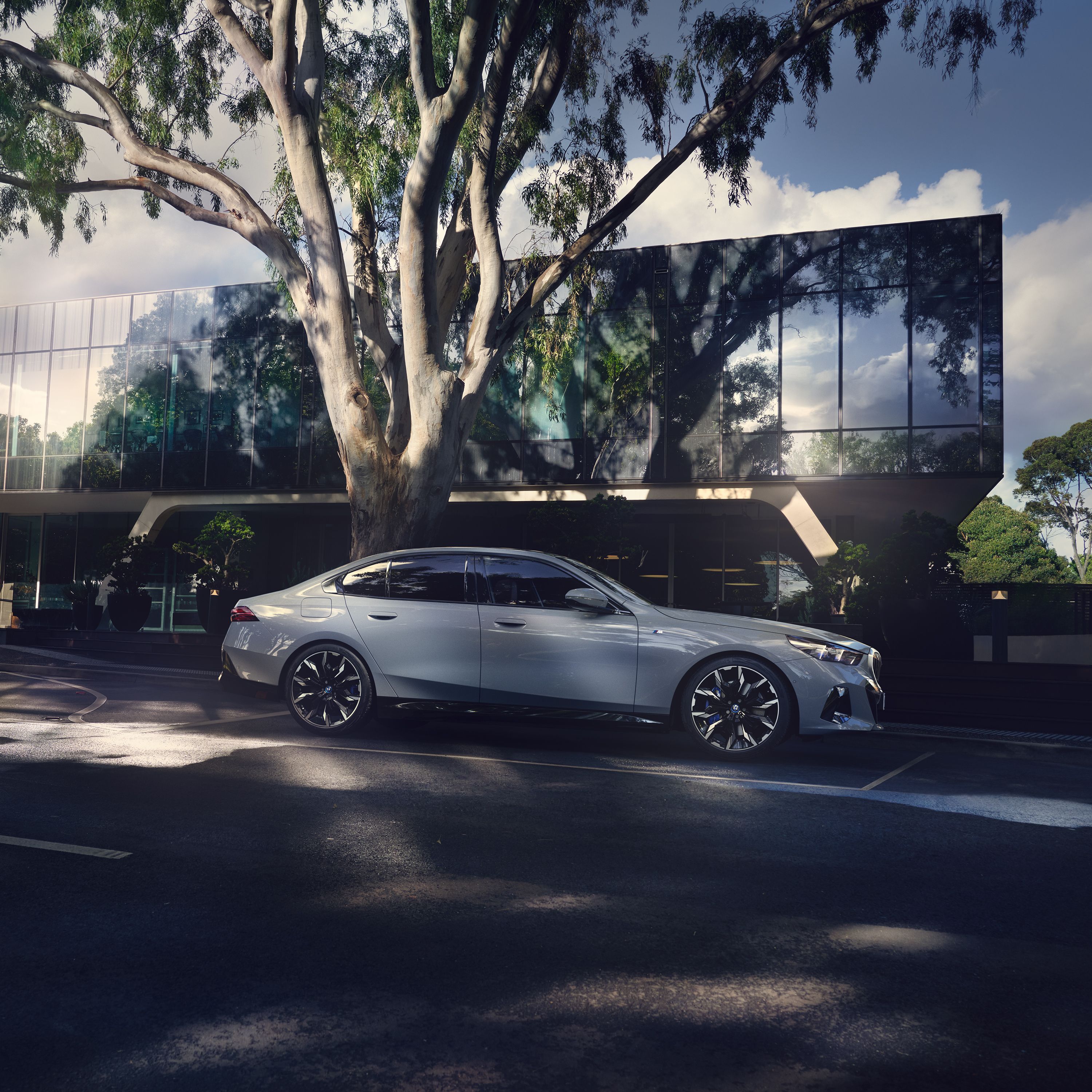
BMW FINANCIAL SERVICES.
AN OVERVIEW OF THE BMW 5 SERIES.
The BMW 5 Series continues the concept of the “New Class". It combines technological innovations, powerful motors and comfort features from the luxury class.
For half a century, Iconic elements such as the double kidney grille and the “Hofmeister kink” on the C pillar have been its trademark. In addition, the BMW 5 Series is the first vehicle to introduce the familiar naming system for the model series. The first digit indicates the model series. The other two digits provide information on the motorisation. From the BMW 5 Series onwards, all future model series are named according to this system.
The BMW 5 Series is a pioneer of its class from the outset and represents the pinnacle of business sedans throughout the world. Find out more about half a century of the BMW 5 Series.
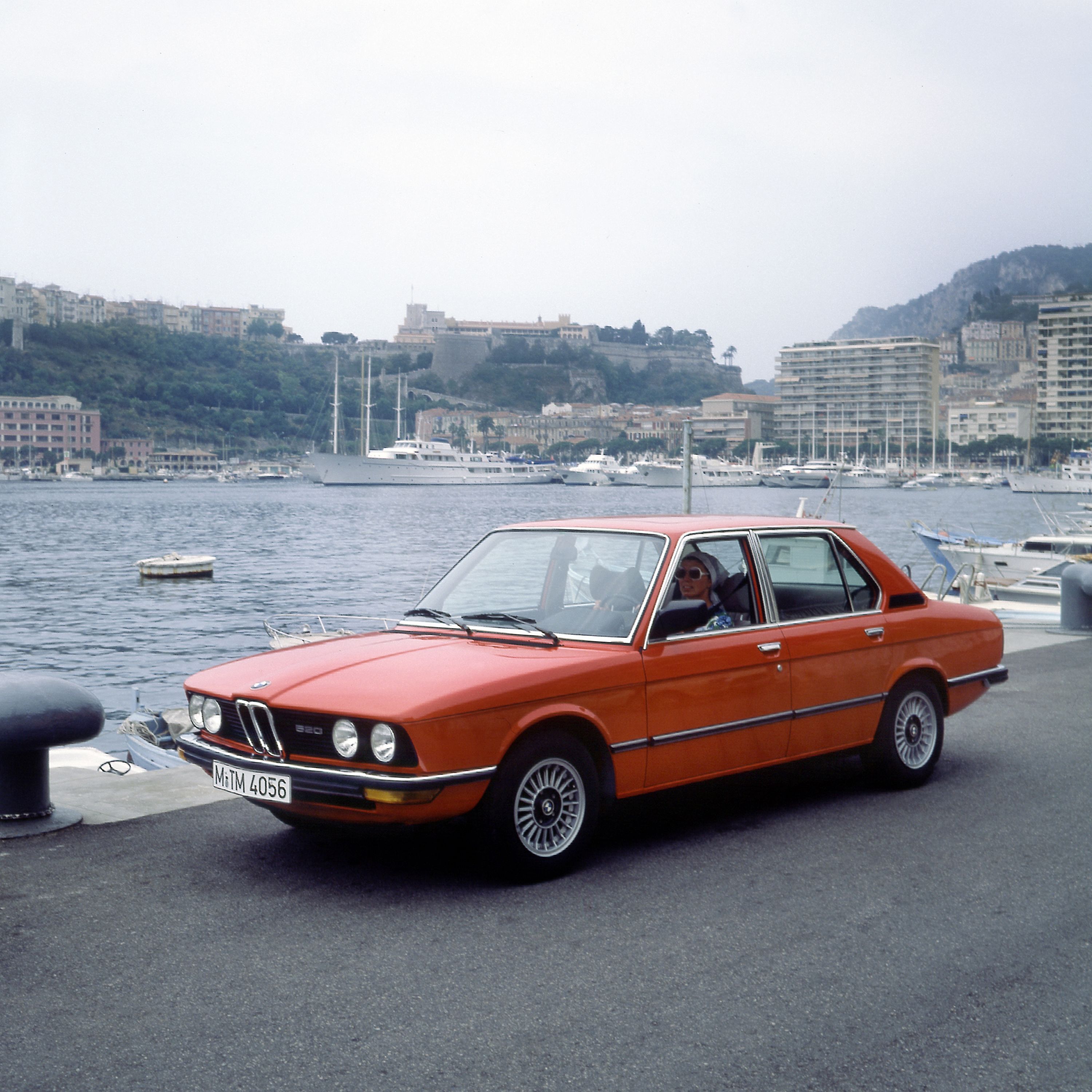
THE FIRST GENERATION OF THE BMW 5 SERIES.
(BMW E12)
In 1972, BMW launches a sedan for the upper mid-size class. Its creator was the design legend Paul Bracq. This vehicle is the first BMW 5 Series. It already exhibits all the characteristic features that will also distinguish it in the future. Among them are the striking radiator grille with double headlights, the extended silhouette and the rear-wheel drive typical of BMW. The suspension brings together athleticism, safety and comfort. In the cockpit, the focus is on strict functionality. Its interior impresses with high-quality materials and a range of convenient features.
The following year sees more powerful versions of the motors. First of all, the BMW 525 with 107 kW and then the BMW 528 with a 121 kW engine.
From 1977 onwards, the bonnet rises in all vehicles. The rear lights become larger. The 6-cylinder models, BMW 525 and 528, receive double carburetors. And more power as a result. With almost 700,000 models produced in total, production continues until the appearance of the successor.
Production period: 1972 – 1981
Engines: 1.8 – 3.5 litres (66 – 160 kW), 4 & 6 cylinders
Length/breadth/height: 4,620 mm/1,690 mm/1,425 mm
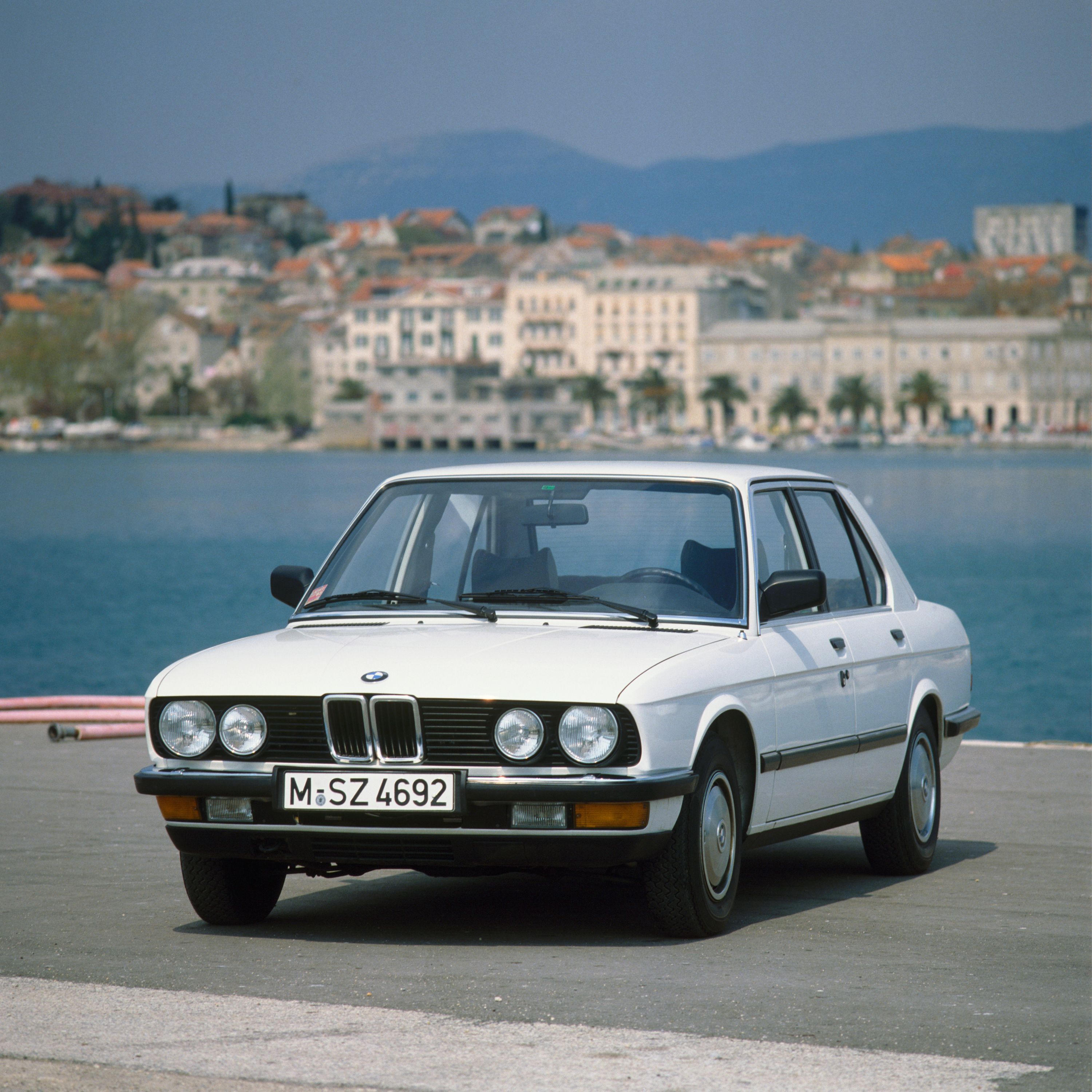
THE SECOND GENERATION OF THE BMW 5 SERIES.
(BMW E28)
The technical progress continues. In addition, the design becomes more focused, with details such as the aerodynamically raised rear. The typical front section with the double headlights in the radiator grille remains. Inside, technical innovations such as ABS, airbags, electronic engine control, exhaust gas catalytic converters and an on-board computer are available as options. Almost all engines now have manifold injection.
In 1983, the first BMW 5 Series model is equipped with a diesel engine. The BMW 524td produces 85 kW and is the fastest diesel sedan in the world at the time.
In 1985, along with the BMW M535i, the first BMW M5 is introduced. It lays down the foundations for a range of sporty sedans. They demonstrate that exceptional driving characteristics are not the exclusive domain of exotic sports cars. The BMW M5 is produced entirely by hand. It shares the 3.5-litre inline 6-cylinder engine with the BMW M635CSi and delivers an impressive 210 kW. Despite this output, its appearance remains understated and elegant.
Even back in 1974, BMW M GmbH supplies M versions of the BMW E12 in limited quantities. The highlight is the BMW M535i. With its distinctive front spoiler and a 6-cylinder engine supplying 160 kW, it sets standards – both optically and athletically. Up until the end of 1987, more than 722,000 vehicles from the BMW 5 Series roll off the production line.
Production period: 1981 – 1987
Engines: 1.8 – 3.5 litres (66 – 210 kW), 4 & 6 cylinders
Length/breadth/height: 4,620 mm/1,700 mm/1,415 mm
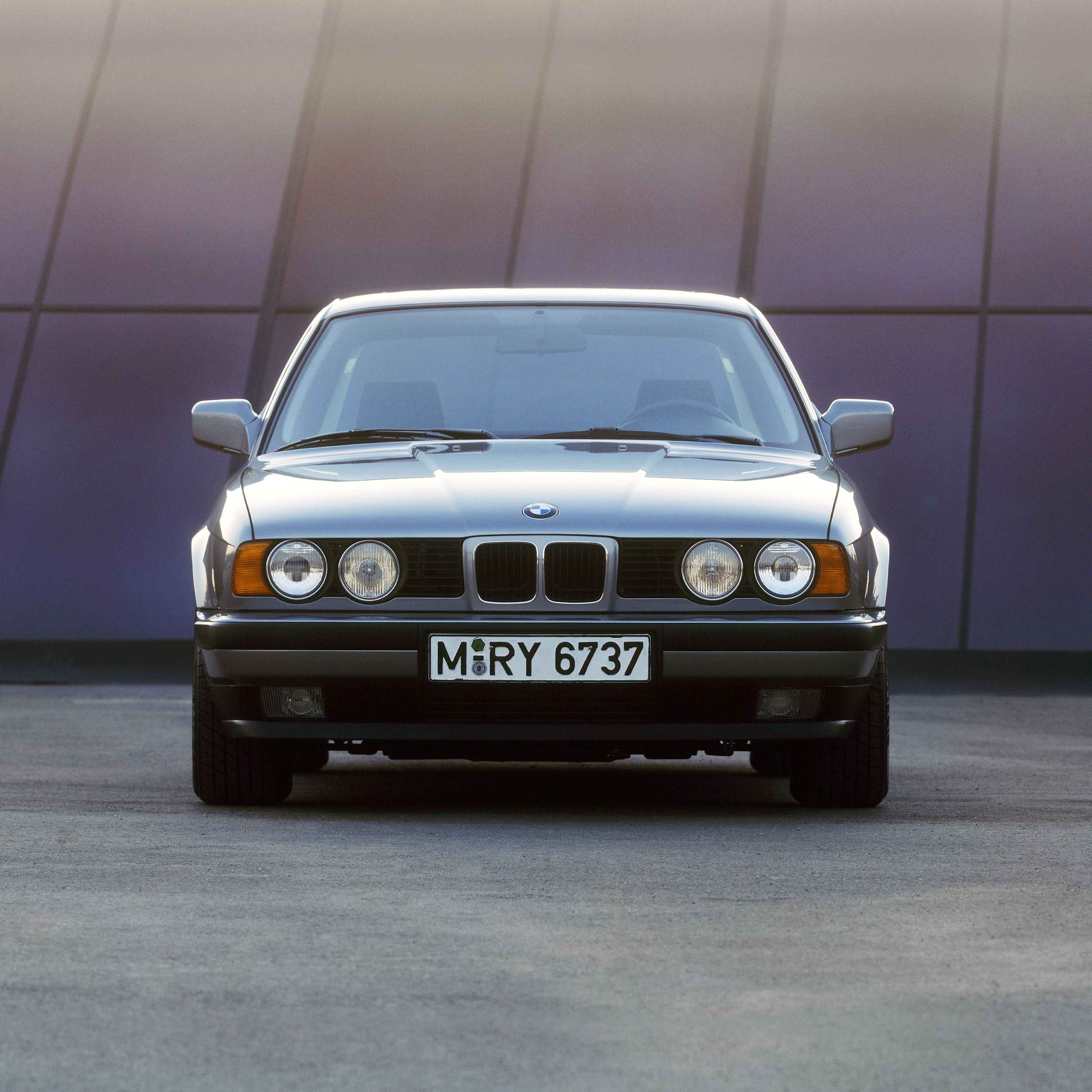
THE THIRD GENERATION OF THE BMW 5 SERIES.
(BMW E34)
This BMW 5 Series appears in 1988. It is significantly larger and broader than its predecessor. Yet, nevertheless, more aerodynamic. As a result, all BMW 5 Series with combustion engines accelerate beyond 200 km/h. Thanks to the long wheelbase, the vehicle is sporty and dynamic. Another contribution comes from the almost optimum weight distribution of 50:50 between front and rear axles. Starting from the 4-cylinder BMW 518i to the powerful BMW M5 with 232 kW, which is already available in the launch year.
In 1991, the BMW 5 Series Touring attracts attention. For the very first time, BMW presents an estate car in the upper mid-size class. One special highlight is the rear window. It can be opened independently of the tailgate. In the same year, the doors receive reinforced side impact protection for increased safety.
In 1992, the BMW 525iX comes onto the market. It is the first BMW 5 Series with all-wheel drive. At the same time, V8 engines are installed in the BMW 5 Series models. The engines in the BMW 530i and BMW 540i run particularly quietly and powerfully. The BMW M5 retains its inline 6-cylinder engine. However, its displacement is raised to 3.8 litres. This also increases the output to 250 kW. In addition, the BMW M5 is now also available as a Touring model. Production of the Sedan is discontinued in 1995. The BMW 5er Touring remains available until 1996. A total of 1.3 million vehicles of this model are delivered.
Production period: 1988 – 1996
Engines: 1.8 – 4.0 litres (83 – 250 kW), 4, 6 & 8 cylinders
Length/breadth/height: 4,720 mm/1,751 mm/1,412 – 1,421 mm
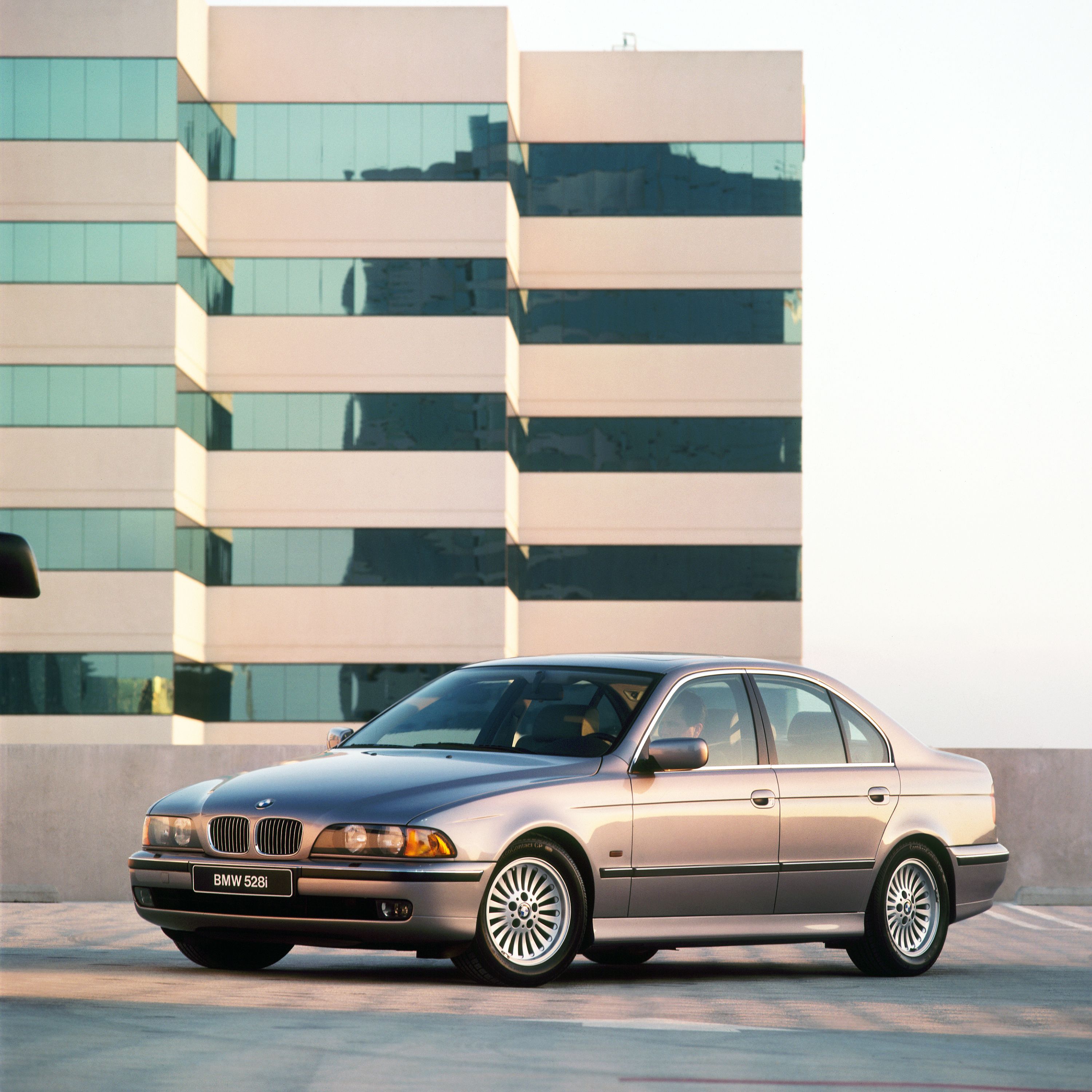
THE FOURTH GENERATION OF THE BMW 5 SERIES.
(BMW E39)
The new generation of the BMW 5 Series is larger than its predecessor. Yet thanks to the increased use of lightweight aluminium in the chassis, the weight nevertheless remains almost the same. As a result, the vehicle gains in its values for agility, stability and driving precision. Furthermore, the BMW 5 Series available as from 1995 has outstanding protection against rust as a large part of the body is hot-dip galvanised. The aerodynamics are also impressive. This BMW 5 Series has the best drag coefficient of its class. Ten optional airbags additionally make it particularly safe.
A new BMW 5 Series Touring is also available from 1997. In 1998, as a diesel for the first time, it sets new standards around the world in terms of performance and efficiency with an inline 6-cylinder common-rail power unit. The modern engines inspire with their impressive performance and smooth running characteristics. Starting from the 4-cylinder diesel through to the powerful V8 cylinder motor with 294 kW in the BMW M5.
The model facelift of the BMW 5 Series in the year 2000 leads to the iconic driving lights in the form of a ring around the headlights. The fog lights are also round instead of angular as in the past. With more than 1.48 million vehicles delivered – including 266,000 Touring models – the BMW 5 Series sets a new sales record up until the end of its production run in 2004.
Production period: 1995 – 2004
Engines: 2.0 – 5.0 litres (85 – 294 kW), 4, 6 & 8 cylinders
Length/breadth/height: 4,775 – 4,805 mm/1,800 mm/1,435 – 1,445 mm
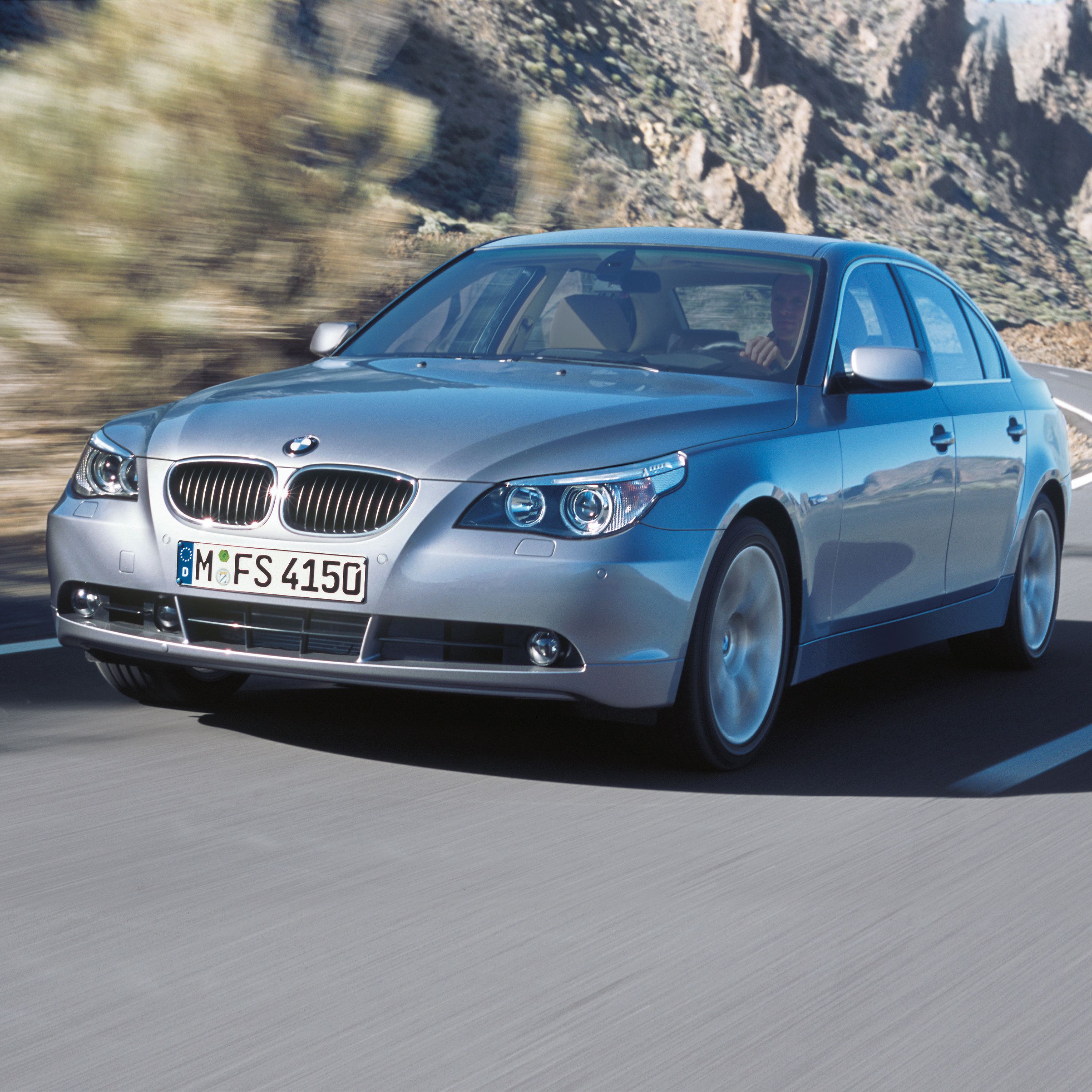
THE FIFTH GENERATION OF THE BMW 5 SERIES.
(BMW E60, E61)
Chris Bangle is responsible for the characteristic shapes of the BMW 5 Series Sedan available as from 2003. The alternating concave and convex planes create a unique interplay of light and shade. The operating concept is adopted from the BMW luxury class sedans. The driver operates the BMW 5 Series by means of iDrive, while the Head-Up Display projects the most important details relevant for drivers directly into their field of vision on the windscreen. The new BMW 5 Series Sedan is large and more spacious than its predecessors. However, thanks to the lightweight construction method with aluminium front section, it is actually up to 75 kg lighter. Adaptive cornering and brake lights are available on request. In addition, the BMW 5 Series is equipped with Dynamic Drive active roll reduction and Active Cruise Control (ACC). The inline 6-cylinder engines impress both as diesels with common rail technology and in the petrol versions with Bi-VANOS.
From 2004, the vehicle is also available as a Touring. One year later, the BMW M5 goes on sale as a sedan and a Touring. Its mighty 5-litre V10 engine with 373 kW makes it one of the fastest estate cars worldwide.
In 2007, it undergoes a cautious modernisation. These changes affect the lights, the bumpers and the overhauled iDrive system.
Production period: 2003 – 2010
Engines: 2.0 – 5.0 litres (120 – 373 kW), 4, 6, 8 & 10 cylinders
Length/breadth/height: 4,841 – 4,855 mm/1,846 mm/1,468 – 1,512 mm
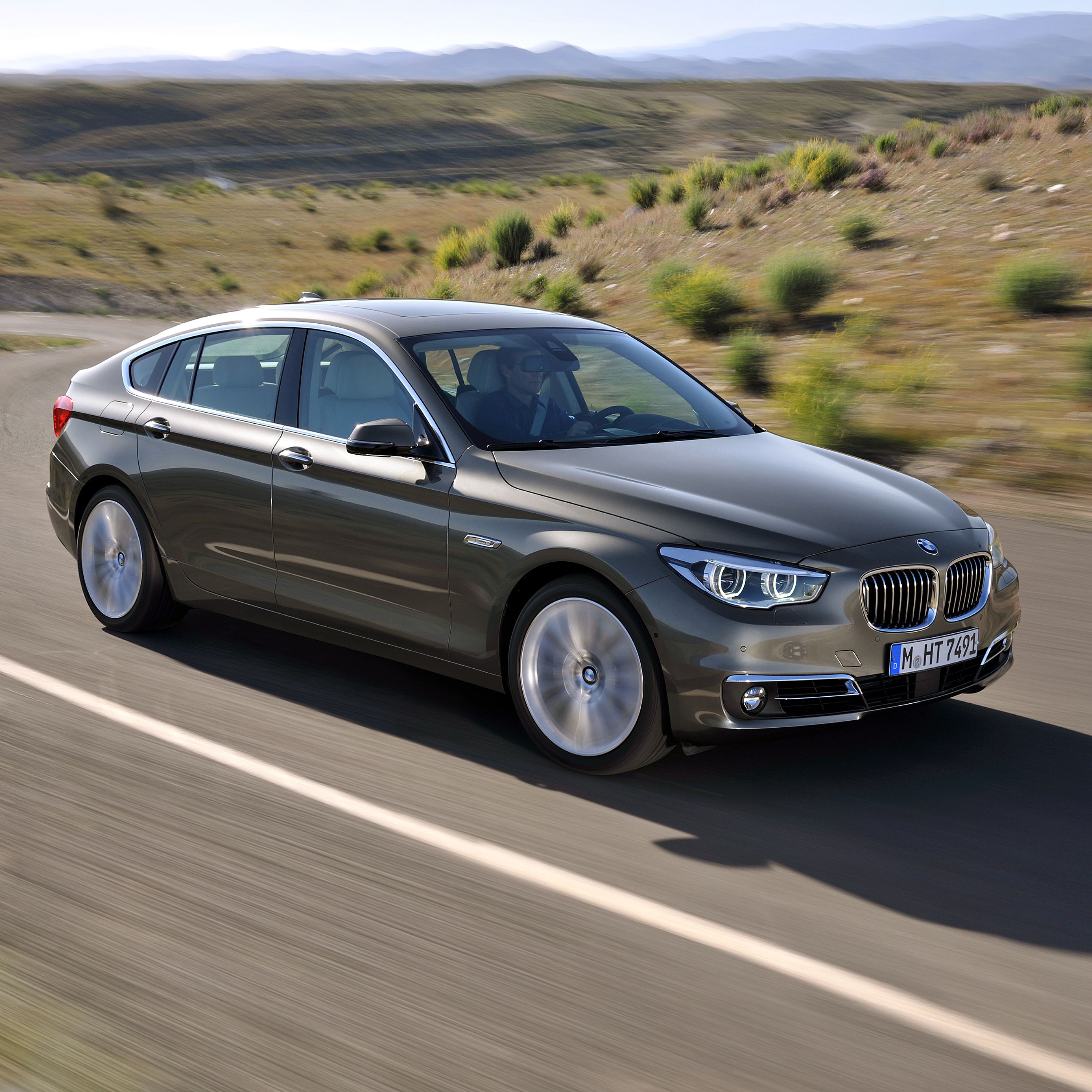
BMW 5 SERIES GRAN TURISMO.
(BMW F07)
In parallel with the development of the BMW 5 Series, BMW creates a completely new vehicle segment. The BMW 5 Series Gran Turismo is as elegant as a Sedan. As flexible as a Sports Activity Vehicle. And as sporty as a classic Gran Turismo. It combines elegance, a generous and spacious level of comfort and driving dynamics typical of BMW.
The coupé-like roof line, the extended side view and the distinctive BMW kidney grille create an harmonious effect. L-shaped rear lights and horizontal lines produce an impression of breadth for the rear.
Dynamic Driving Control with 8-speed automatic transmission fitted as standard makes the BMW 5 Series Gran Turismo especially dynamic and efficient. Technical innovations such as a double wishbone front axle, an integral V rear axle and optional Integral Active Steering improve road holding and cornering. The interior is spacious and versatile in the range of uses it offers. An elevated seating position and large window areas give drivers a clearer view. High-quality materials convey a luxurious atmosphere. BMW iDrive gives drivers an easy and intuitive way of operating the assistance systems such as Lane Change Warning, BMW Night Vision, and High-Beam Assistant. And a permanently installed Internet connection links the vehicle with BMW Online and the BMW Teleservices.
Production period: 2009 – 2017
Engines: 2.0 – 4.4 litres (135 – 330 kW), 4, 6 & 8 cylinders
Length/breadth/height: 4,998 mm/1,901 mm/1,559 mm
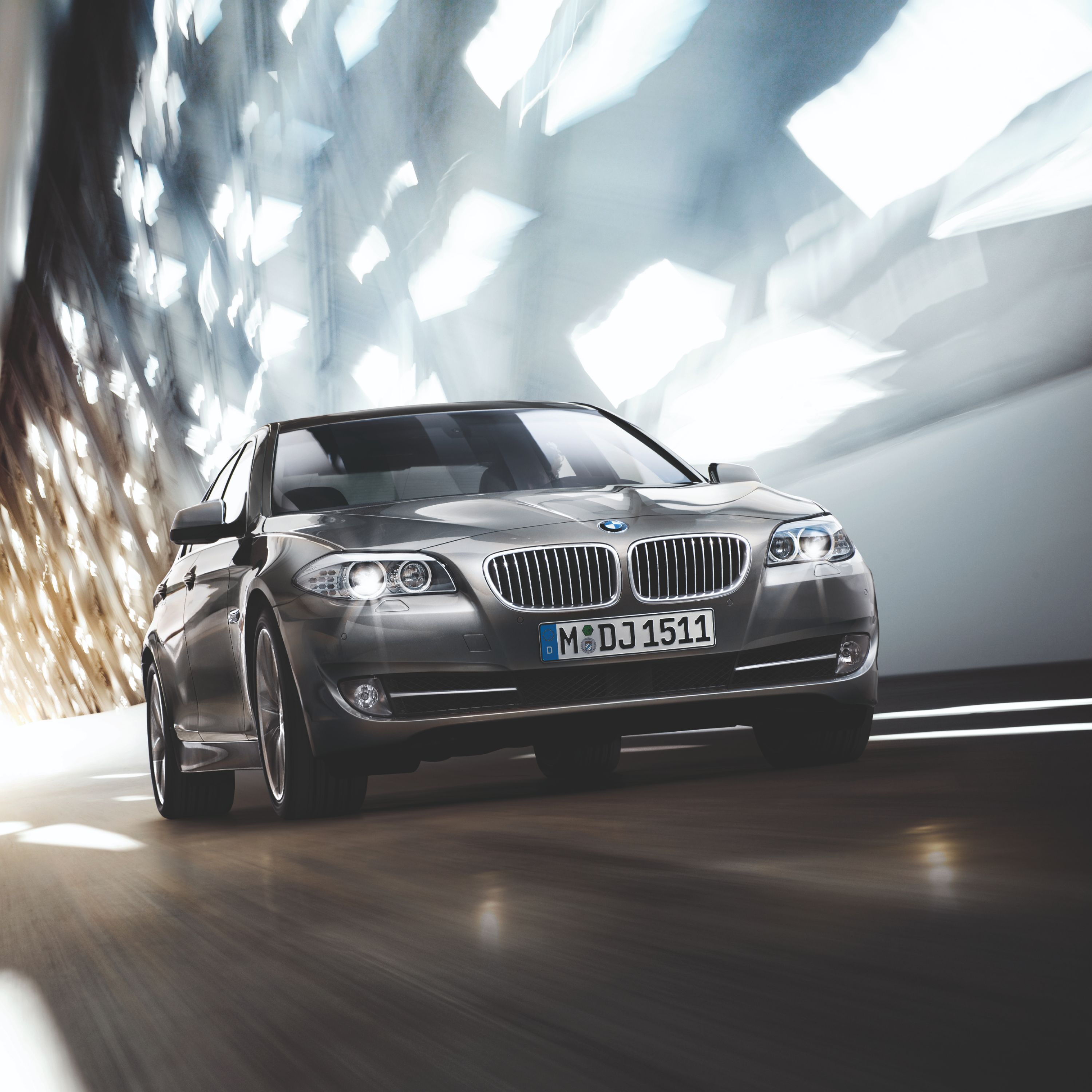
THE SIXTH GENERATION OF THE BMW 5 SERIES.
(BMW F10, F11)
In 2010, a new generation of the BMW 5 Series first sees the light of day. Total sales exceed two million. The reasons for this are the sporty and elegant design, the typical sheer driving pleasure and a large number of technological innovations. The intelligent BMW all-wheel drive BMW xDrive distributes the driving force to the wheels according to the situation. A V8-cylinder with BMW TwinPower Turbo and 300 kW is available as the strongest petrol engine. The most powerful diesel is an inline 6-cylinder power unit with 200 kW. The vehicle is available as both a sedan and a Touring.
From September 2010, the M Package provides a further sporty upgrade for the interior and exterior. The M sport suspension, an M aerodynamics package and M light alloy wheels turn this agile sports star into an exceptional athlete. Setting exclusive accents in the interior are sports seats in M design, an M leather steering wheel, an M gear knob and M interior trims.
The 2013 facelift brings a revision to the design. Additional motorisation options extend the portfolio. Xenon headlights and a Bluetooth hands-free device are now standard equipment. From 2016, the BMW 530e is available as a hybrid version. With its plug-in hybrid drive, the vehicle is able to drive free of local emissions. Driving dynamics, comfort and efficiency remain at the same high level.
Production period: 2010 – 2017
Engines: 2.0 – 4.4 litres (105 – 423 kW), 4, 6 & 8 cylinders
Length/breadth/height: 4,899 – 5,039 mm/1,860 mm/1,464 – 1,471 mm
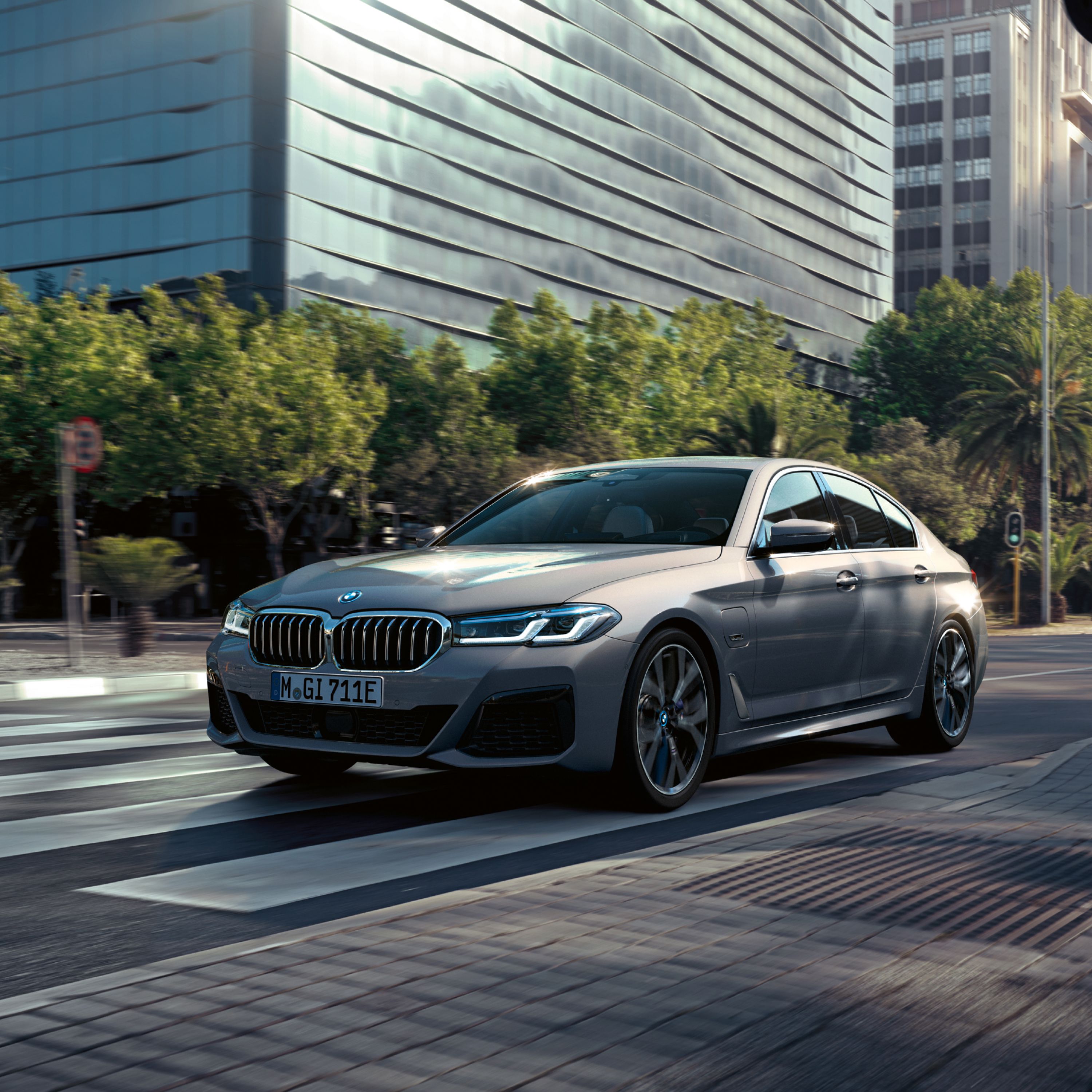
THE SEVENTH GENERATION OF THE BMW 5 SERIES.
(BMW G30, G31)
In 2017, the BMW 5 Series sets a new highlight in the range of sporty business sedans. And it does so optically, with typical BMW proportions, a long wheelbase, an extended bonnet and a flowing roof line. Clear surfaces and precisely sculpted contours accentuate the BMW kidney grille. It is directly connected with the headlights and impressively emphasises the breadth of the vehicle.
The Touring with practical luggage compartment volume also appears in the same year.
A broad range of modern engines is available. Among them is an efficient hybrid drive – of course. The optional Adaptive suspension and the integral Active Steering increase the driving dynamics. Progressive assistance systems guarantee safety. The optionally available Driving Assistant Professional provides automatic support for functions such as lane holding to ensure more relaxed driving.
In 2020, the facelift redesigns the kidney grille. The headlights with optional laser light become flatter. New paintwork options are added to the range. On the inside, new comfort seats are available on request. The assistance systems are extended to include the Emergency Corridor Assistant and City Braking Activation.
Production period: 2017 – today
Engines: 1.6 – 4.4 litres (135 – 390 kW), 4, 6 & 8 cylinders
Length/breadth/height: 4,936 – 4,972 mm/1,868 mm/1,483 – 1,498 mm
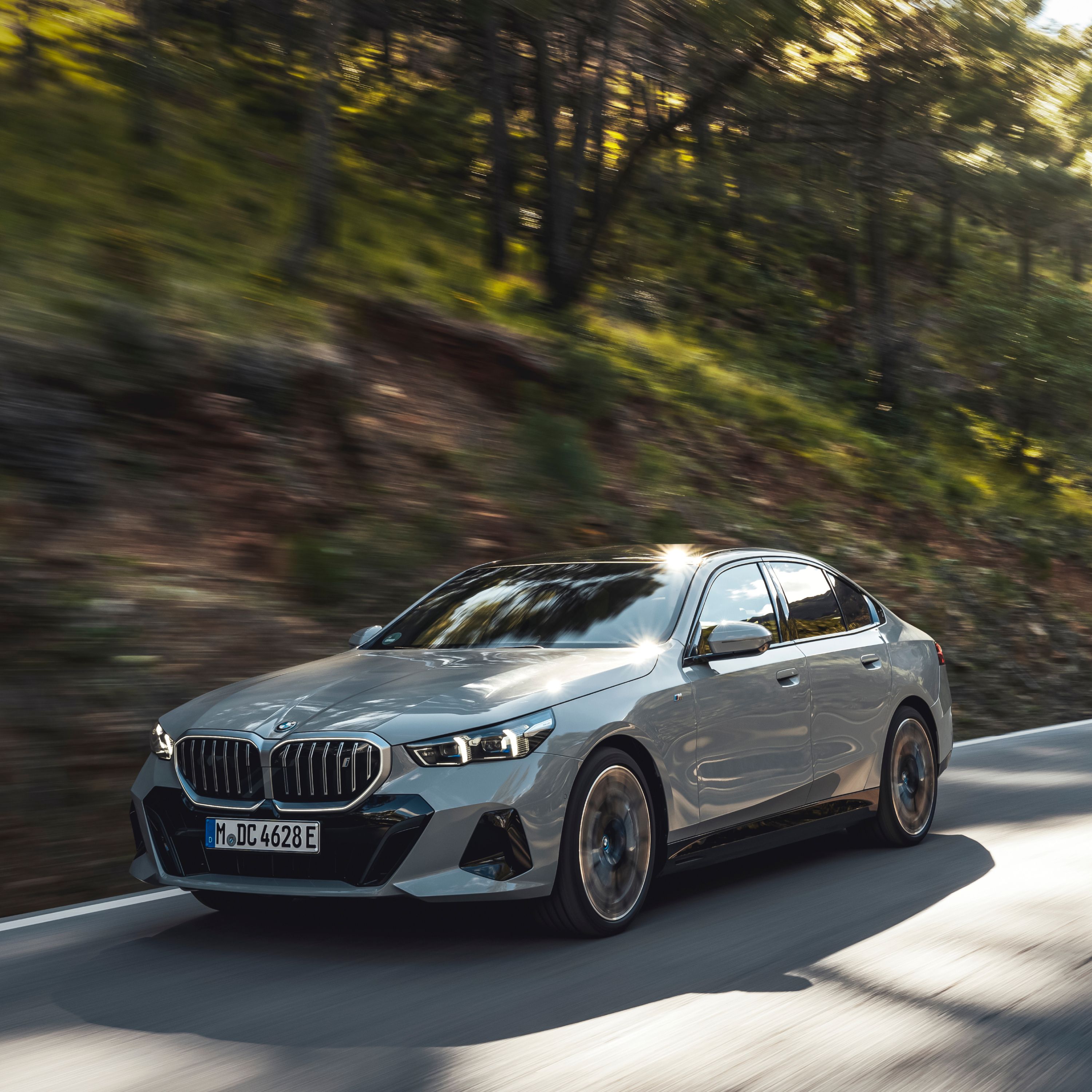
THE EIGHTH GENERATION OF THE BMW 5 SERIES.
(BMW G60, G61)
The sporty design of the BMW 5 Series is reinterpreted with the eighth generation. Characteristic design elements such as the typical BMW proportions, a long wheelbase, an extended bonnet and a flowing roof line are implemented with particular elegance. Exclusive highlights such as the “Iconic Glow” illuminated BMW kidney grille, the generously proportioned Panoramic glass roof and the crystalline Interaction Bar give the new BMW 5 Series its very own personality. In 2024, the model also comes on the market as a Touring with comfortable space.
The broad motorisation range is remarkable: the latest generation of the BMW 5 Series is available with classic petrol or diesel engines. Yet also as an all-electric BMW i5, a plug-in hybrid or a high-performance M automobile.
Safety and comfort are an integral constituent of every motorisation. Comprehensive assistance and connectivity technologies make long journeys while the BMW Live Cockpit Professional offers an extensive overview of all relevant driving information.
Production period: from 2023
Engines: 2.0 litres, electric motor (120 – 442 kW), 4 cylinders
Length/breadth/height: 5,060 mm/1,900 mm/1,505 – 1,515 mm
FREQUENTLY ASKED QUESTIONS.
[1]Model no longer available to order as a new vehicle.
